24/7 Expert Restoration
Emergency Restoration Services Across Colorado
Our Goal is for the Customers to have no out-of-Pocket Costs
24/7 Water Damage Restoration
Mold Removal & Remediation
Fire Damage Restoration
Biohazard Cleanup
Storm Damage Restoration
Sewage Cleanup
Emergency Board-Up
Structural Drying & Dehumidification
Contents Restoration
Odor Removal
Working with all insurance companies in the USA.
.jpg)
3500+
35+
100%


About BoneDry Services
Restoring Your Property with Expertise and Care
3500+
35+
100%


Our Services
Expert Restoration Services
Fast, Transparent, and Stress-Free
Our Simple 3-Step Restoration Process
01
Call Us Anytime 24/7
02
Inspection and Assessment
03
Restoration and Completion
Projects Gallery
3500+ Projects Completed Across Colorado
Expert Service, Local Integrity, and Unmatched Reliability
Why Colorado Trusts BoneDry Services for Emergency Restoration





Real Stories, Real Results
Your Neighbours, Your Stories: Client Testimonials
Blog
Our Latest Blogs

Residential Water Damage Restoration in Denver: 10 Professional Tips
Water damage is one of the most common and costly issues facing homeowners in Denver and the surrounding Front Range communities. Whether caused by frozen pipes, appliance failures, roof leaks, or winter storms, water intrusion can quickly spiral into severe structural damage, mold growth, and expensive repairs if not addressed correctly.
The challenge for Denver homeowners is that winter conditions — rapid temperature swings, early-season freezes, and heavy snow cycles — make water damage more likely and more severe. Acting quickly and following the right steps can save thousands of dollars and prevent long-term issues.
Below are 10 expert-backed tips every Denver homeowner should know to minimize damage and stay prepared this winter.
Why Water Damage Is Especially Common in Denver Homes
Denver’s climate creates a unique set of risks:
- Early freezes leading to burst pipes
- Ice dams causing attic and roof leaks
- Dry air increasing static pressure in plumbing
- Melting snow saturating soil around foundations
- High elevation temperature swings stressing home systems
Combined with older neighborhoods like Wheat Ridge, Lakewood, Arvada, and Englewood, where aging plumbing is common, the risk of winter water damage is amplified.
10 Professional Water Damage Restoration Tips for Denver Homeowners
1. Shut Off the Water Immediately

Locate your main shutoff valve and turn it off if you see:
- flooding
- spraying water
- dripping ceilings
- wet walls
- sudden pressure loss
Stopping the flow early is the most effective way to minimize damage.
2. Turn Off Electricity in Affected Areas
Water and wiring are a dangerous combination. Cut power to impacted zones before entering them.
3. Document Everything for Insurance
Take photos and videos of:
- affected rooms
- damaged materials
- visible leaks
- personal items impacted
Insurance companies require documentation before approving claims.
4. Remove Standing Water Quickly
The first 24 hours are critical. Even small puddles begin seeping into:
- carpet padding
- drywall
- subflooring
- insulation
Use towels, a wet/dry vacuum, or call professionals for extraction.
Learn more:
➡️ Water Damage Restoration in Denver
5. Identify the Water Source (Clean, Gray, or Blackwater)
The category of water determines the level of risk:
- Clean water: burst supply pipes, appliance failures
- Gray water: dishwasher overflow, washing machine discharge
- Blackwater: sewage backups, outdoor flooding
Blackwater requires certified remediation and disinfection.
6. Avoid DIY Demolition
Many homeowners rip out drywall or insulation too early — or not enough.
Professionals use thermal imaging and moisture meters to assess what is salvageable and what must be removed.
Incorrect demo can:
- spread mold
- expose electrical hazards
- void insurance coverage
7. Focus on Drying the Structure, Not Just Surfaces

A common mistake is drying only what you can see.
Professional drying targets:
- wall cavities
- insulation
- subflooring
- joists
- sill plates
- hidden moisture pockets
Moisture left behind leads to mold within 48 hours.
8. Use Professional Dehumidification
Homeowners often rely on fans alone, which only moves air — it doesn’t remove moisture.
Industrial dehumidifiers extract gallons of moisture per day and prevent structural warping.
9. Check for Mold Growth Early
Even if surfaces appear dry, mold may be spreading behind walls or flooring.
Watch for:
- musty odors
- discoloration
- soft drywall
- bubbling paint
BoneDry also provides mold remediation when needed:
10. Partner With a Restoration Company That Handles Repairs Too
Many remediation companies leave homeowners stranded after cleanup.
BoneDry is one of Colorado’s only companies offering:
- mitigation
- drying
- cleanup
- Content restoration and repairs
You get one team managing the entire project — no delays, no juggling contractors.
Why Fast Action Matters: Hidden Water Damage Spreads Quickly
Even a few inches of water can:
- soak into walls within minutes
- reach electrical outlets in hours
- cause mold by day two
- saturate insulation and subfloors
- weaken framing and structural supports
This is why professional water damage restoration isn’t optional — it’s essential.
Why Denver Homeowners Choose BoneDry Services

BoneDry is Colorado’s largest privately owned restoration company, serving homeowners from Denver to the mountains.
We provide:
- 24/7 emergency water damage response
- 90-minute arrival anywhere in Colorado
- Moisture mapping with thermal imaging
- Complete extraction, drying & dehumidification
- Full reconstruction services
Call Colorado’s Fastest Water Damage Team — We’re Here 24/7
If your home is experiencing leaks, flooding, or moisture damage, immediate action prevents costly long-term repairs.
BoneDry Services offers:
- emergency response anytime
- free water damage inspections
- certified restoration specialists
- full repair and reconstruction
- coverage help with insurance claims
📞 Call now: (303) 276-4163
FAQ Section
1: What causes most water damage in Denver homes?
Frozen pipes, roof leaks, ice dams, and appliance failures are the top causes during winter.
2: How fast can mold grow after water damage?
Mold can begin growing within 24–48 hours, especially in hidden areas.
3: Should I call my insurance before or after a restoration company?
Call a restoration company first so they can document damage and stop further loss — insurers prefer this.
4: What should I do first when I discover water damage?
Shut off the main water supply and electricity, then contact a professional team.
5: Can I clean up water damage myself?
You can handle minor spills, but structural damage requires professional equipment and training.
6: How long does professional drying take?
Most properties dry within 3–5 days, depending on severity.
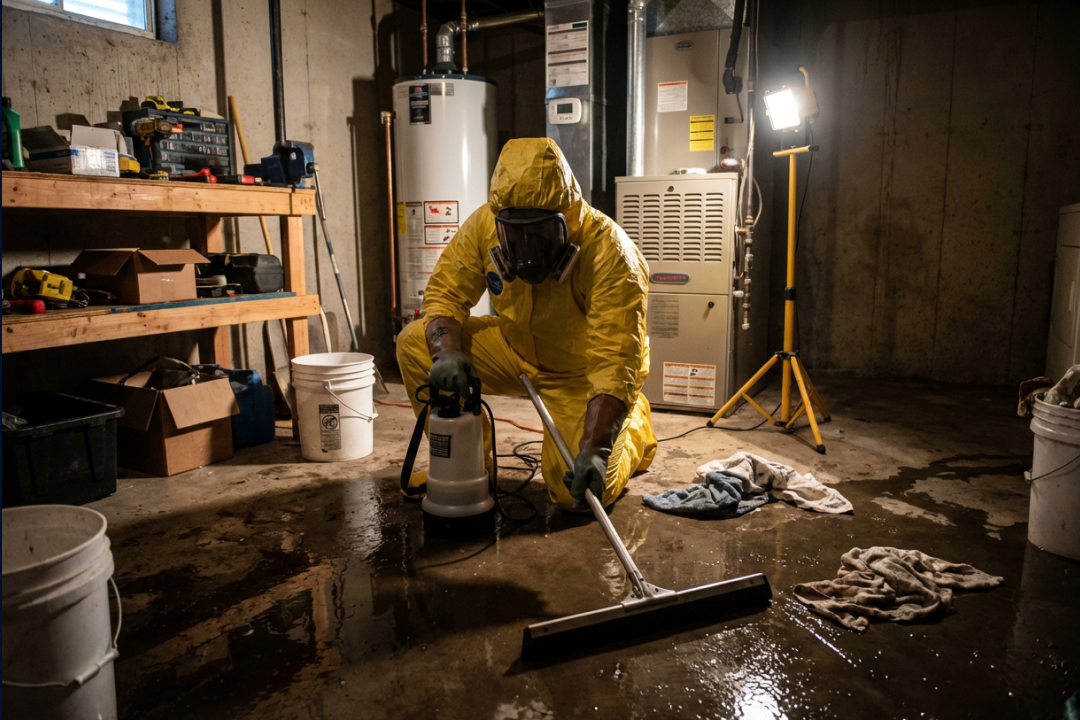
Sewage Cleanup in Denver During Winter: Risks & Prevention
Sewage Cleanup in Denver During Winter: Risks for Homeowners
Winter in Denver brings freezing temperatures, snowstorms, and rapid temperature swings — conditions that significantly increase the risk of sewage backups in residential homes. When temperatures drop, your plumbing system experiences extra stress, and the city sewer lines often slow down due to partial freezing, heavy water usage, and debris buildup.
For many homeowners in Denver, Wheat Ridge, Arvada, Lakewood, Thornton, Aurora, and Commerce City, winter sewage backups are not just inconvenient; they’re dangerous. Sewage exposure can lead to contamination, structural damage, mold growth, and serious health risks if not handled quickly and professionally.
In this guide, you’ll learn the most common causes of winter sewage backups, warning signs to watch for, and how to protect your home.
Why Sewage Backups Are More Common in Winter

Denver’s winter environment creates a perfect storm for plumbing failures. The most common winter-related causes include:
1. Frozen Pipes Leading to Blockages
Even partially frozen pipes restrict water flow. When wastewater cannot exit the home properly, pressure builds — eventually causing sewage to flow backward into sinks, showers, and floor drains.
2. Increased Indoor Water Usage
During winter, households take longer showers, run heaters, use humidifiers, and do more indoor activities. That means more wastewater entering an already stressed sewer system.
3. Ground Freezing and Soil Shifting
Frozen ground compresses and shifts surrounding soil, placing pressure on underground sewer lines. This can cause cracks, misalignment, or full collapses.
4. Overloaded Public Sewer Systems
Winter storms cause sudden bursts in water flow, melting cycles, and inflow into public sewer lines — all of which increase the risk of backups in Denver neighborhoods.
5. Tree Root Intrusion (even in winter)
Tree roots continue searching for warmth and moisture underground. Sewer lines provide both, leading to root infiltration that causes blockages and pipe damage.
Signs of a Sewage Backup Homeowners Should Never Ignore
Sewage issues often start subtly but escalate quickly. Watch for:
- Gurgling sounds from drains or toilets
- Slow drainage in sinks, showers, or tubs
- Foul odors coming from floor drains
- Bubbling water in toilets
- Water pooling around basement floor drains
- Toilets backing up when using other appliances (dishwasher, washing machine)
- Wastewater surfacing in yard or driveway
If any of these symptoms appear — especially during freezing temperatures — shut off water usage immediately and call a professional.
Health & Safety Risks of Winter Sewage Backups

Sewage exposure poses higher health risks in winter because it spreads faster indoors when ventilation is limited.
Major risks include:
- Harmful bacteria and viruses
- Blackwater contamination
- Airborne pathogens
- Mold growth within 24–48 hours
- Structural damage to flooring, drywall, and foundations
- Electrical hazards when water reaches outlets or wiring
Because sewage is classified as Category 3 water, it requires certified cleanup following strict safety protocols. DIY cleanup is dangerous and often worsens contamination.
Professional Sewage Cleanup Process: How BoneDry Protects Denver Homes

BoneDry Services follows industry-standard procedures to ensure your home is safe, sanitized, and fully restored.
1. Emergency Response (24/7)
Our team arrives within 90 minutes anywhere in Denver or the Front Range.
2. Containment & Safety Measures
We establish containment zones to prevent cross-contamination and protect unaffected areas.
3. Extraction of Contaminated Water
Professional pumps remove sewage quickly to stop further spread.
4. Removal of Affected Materials
Drywall, flooring, insulation, and contents exposed to blackwater are safely removed.
5. Deep Cleaning & Disinfection
We use hospital-grade antimicrobial solutions to eliminate pathogens.
6. Structural Drying & Moisture Control
Prevent mold growth with advanced drying equipment.
7. Full Repair & Reconstruction
BoneDry is one of the few Colorado companies that handles both cleanup and rebuilding — ensuring your home is fully restored.
Learn more about BoneDry Services:
➡️ Sewage Cleanup Services in Colorado
➡️ Water Damage Restoration in Colorado
How to Reduce Sewage Backup Risks During Denver Winters
1. Insulate Exposed Plumbing
This helps prevent partial freezing and blockages.
2. Clear Main Sewer Lines Annually
A plumber can remove buildup and roots before winter begins.
3. Install a Backwater Valve
This device prevents city sewer water from backing into your home.
4. Limit Grease & Food Waste Disposal
Grease solidifies in cold temperatures, causing pipe blockages.
5. Check Sump Pumps & Drains
Ensure sump pumps are functional and floor drains are unobstructed.
6. Watch for Neighborhood Drainage Issues
If neighbors experience backups, yours may be next — especially in older Denver neighborhoods.
When to Call a Professional Immediately
Contact BoneDry Services if you see:
- Raw sewage in a toilet, shower, or basement
- Standing water around floor drains
- Strong sewage odors inside the home
- Water backing up when flushing or running appliances
- Visible wastewater or debris coming through drains
Even a small backup requires certified remediation.
24/7 Sewage Cleanup in Denver — Call BoneDry Services
When winter sewage backups strike, fast action protects your home and your health.
BoneDry Services provides:
- 24/7 emergency sewage cleanup
- 90-minute arrival across Denver
- Certified technicians
- Full disinfection, drying & reconstruction
📞 Call now: (303) 276-4163
FAQ Section
1: Why are sewage backups worse in winter?
Frozen pipes, increased water usage, and stressed sewer lines make backups more frequent during Denver winters.
2: Is sewage exposure dangerous?
Yes — Category 3 sewage water contains harmful pathogens and requires certified remediation.
3: What should I do if my basement drain backs up?
Stop using water immediately and call a professional sewage cleanup team.
4: Can tree roots cause winter sewage backups?
Yes. Roots seek warmth and moisture year-round and commonly invade sewer lines.
5: Does homeowners insurance cover sewage cleanup?
Many policies do, especially if a backwater valve is installed. BoneDry assists with documentation.
6: How can I prevent sewer backups at home?
Maintain sewer lines, avoid flushing grease, and consider a backwater valve installation.
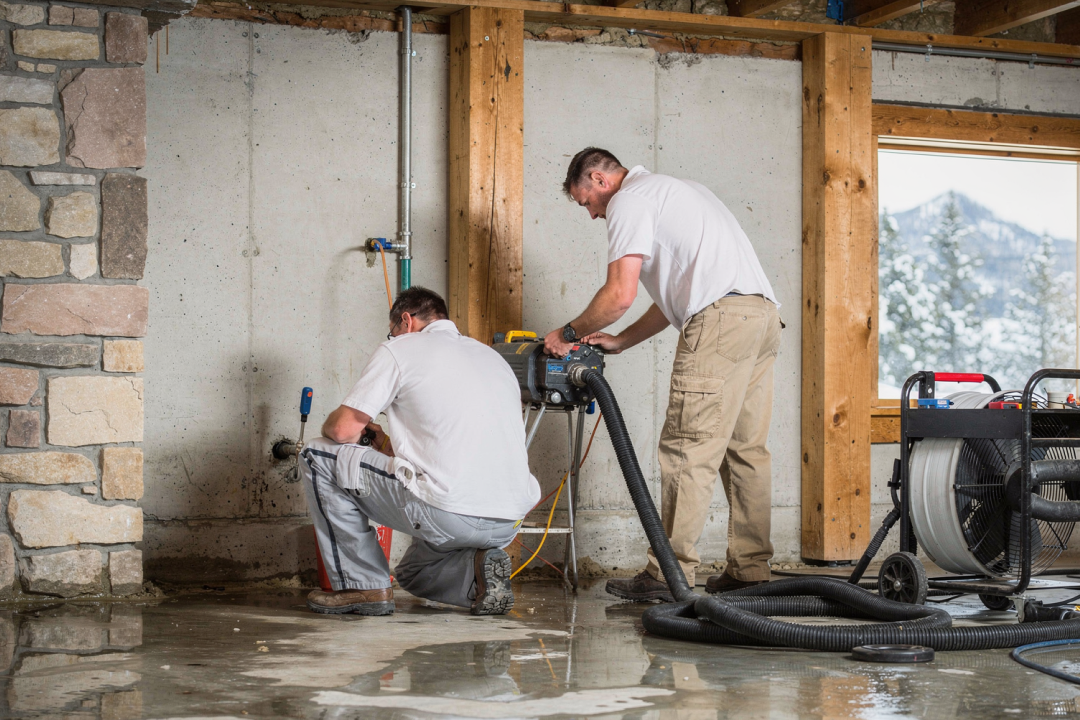
How Snowstorms Cause Hidden Leaks in Colorado Mountain Homes
How Snowstorms Cause Hidden Leaks in Colorado Mountain Homes
Early-season snowstorms are hitting Colorado’s mountain regions fast this year — and while snow-covered roofs may look picturesque, they often hide a serious threat: unseen water leaks. Homes in high-altitude areas like Breckenridge, Winter Park, Vail, Evergreen, and Conifer face unique winter challenges due to heavy snowfall, rapid freeze–thaw cycles, and shifting temperatures.
These hidden leaks can quietly damage your attic, roofing structure, foundation, drywall, and insulation, leading to expensive repairs by spring. Many homeowners don’t realize the severity of the issue — or that the water intrusion may have started long before visible symptoms appear.
This article explains how snowstorms create hidden leaks, the early warning signs, and how to protect your Colorado mountain home.
Why Colorado Snowstorms Create Hidden Leaks

Snowstorms in mountain regions bring more than just snow — they deliver a combination of:
- heavy accumulation
- strong winds
- sudden temperature drops
- intense melt-and-refreeze cycles
This weather pattern places extreme stress on roofs, gutters, flashing, and foundations.
Ice Dams: The #1 Source of Hidden Attic and Roof Leaks
When snow melts due to attic heat and refreezes at the edge of the roof, it creates an ice dam.
This dam forces melting water to back up under shingles and into:
- attics
- insulation
- ceiling cavities
- wall structures
Ice dam leaks can cause months of hidden water saturation before discoloration ever appears on ceilings.
How Snowstorms Lead to Roof, Attic, and Foundation Leaks
1. Roof Leaks from Snow Load
Heavy snow buildup can loosen shingles, damage flashing, and create weak points where water enters unnoticed.
2. Attic Moisture & Condensation
Poor ventilation traps warm, moist air that condenses on attic beams — causing:
- mold growth
- warped wood
- insulation deterioration
3. Foundation Leaks from Melting Snow
Melting snow around the perimeter of the home can seep into foundation walls, especially if:
- gutters are clogged
- the grading slopes toward the home
- cracks are already present
4. Wind-Driven Snow Intrusion
High mountain winds push snow into:
- vents
- soffits
- roof valleys
- siding gaps
This often results in slow, hidden water intrusion.
Early Warning Signs of Hidden Leaks
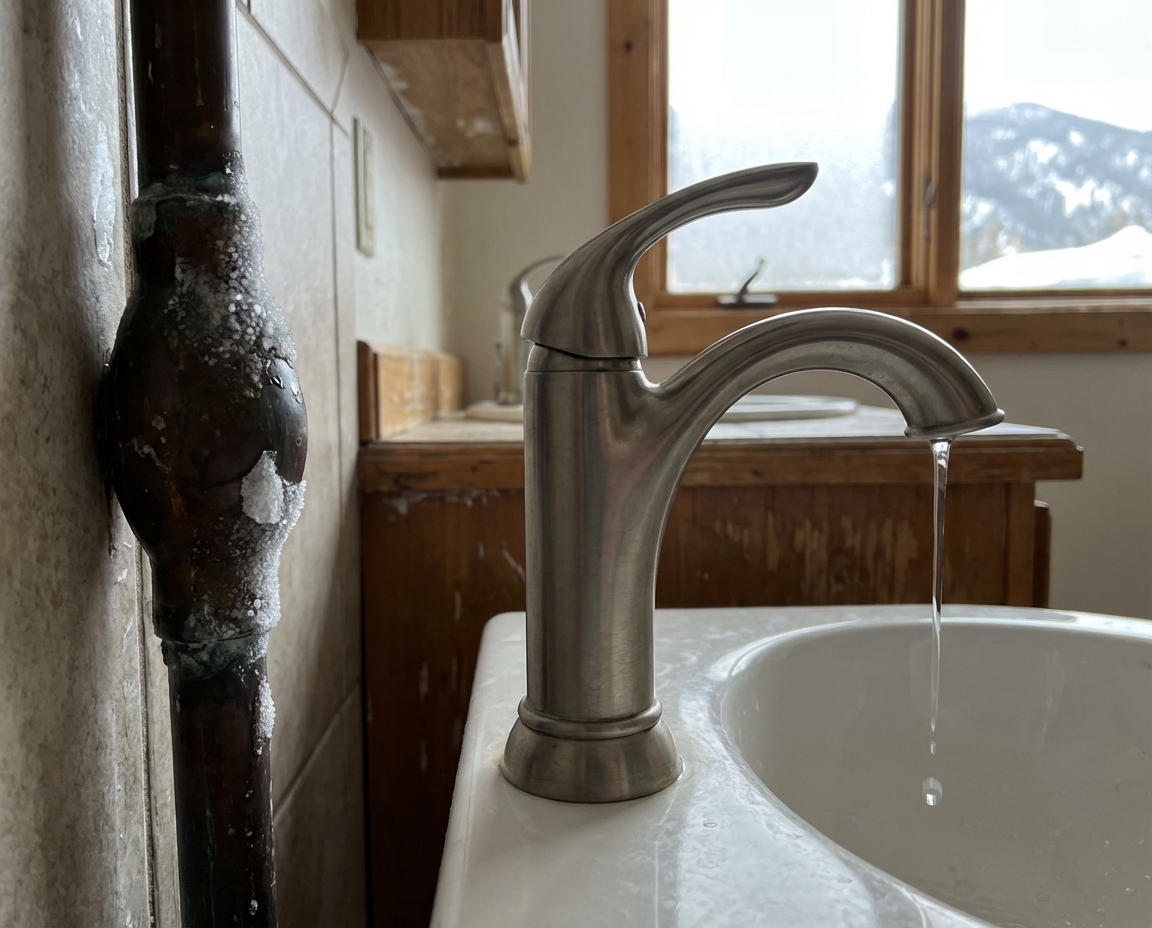
Colorado homeowners should watch for:
- ceiling stains (often yellow or brown rings)
- peeling paint or bubbling drywall
- cold or damp interior walls
- musty odors in the attic
- ice buildup on the roof edge
- icicles longer than 1 ft. (clear sign of ice dams)
- unexpected increases in heating bills
- soft or sagging roof decking
If these signs appear during or after a snowstorm, water may already be infiltrating your home.
How to Prevent Hidden Leak Damage During Snowstorms
1. Clean and Maintain Gutters
Gutters clogged with leaves or ice lead to foundation leaks and ice dams.
2. Improve Attic Ventilation
Proper airflow helps regulate temperature and reduces melting/refreezing cycles.
3. Insulate Attic and Rooflines
Better insulation prevents heat loss that contributes to ice dam formation.
4. Remove Snow Before It Refreezes
Use a roof rake or hire a professional to safely remove heavy snow loads.
5. Seal Roof Penetrations
Areas around chimneys, vents, and skylights are among the most vulnerable.
6. Inspect After Every Major Storm
You should especially monitor high-risk properties such as:
- older roofs
- vacation homes
- homes with flat or low-pitch roofs
If you own a mountain Airbnb or vacation cabin, consider remote monitoring or arranging periodic winter inspections.
When Hidden Leaks Become Water Damage
When attic insulation gets saturated or meltwater enters structural components, the damage spreads fast — often invisibly.
If you notice:
- dripping from ceilings
- swollen drywall
- sagging attic insulation
- water stains around light fixtures
- moldy smells
- pooling water around the foundation
…your home requires immediate professional help.
Delaying even a day can turn a manageable leak into a full-scale restoration project.
Why Colorado Homeowners Trust BoneDry Services
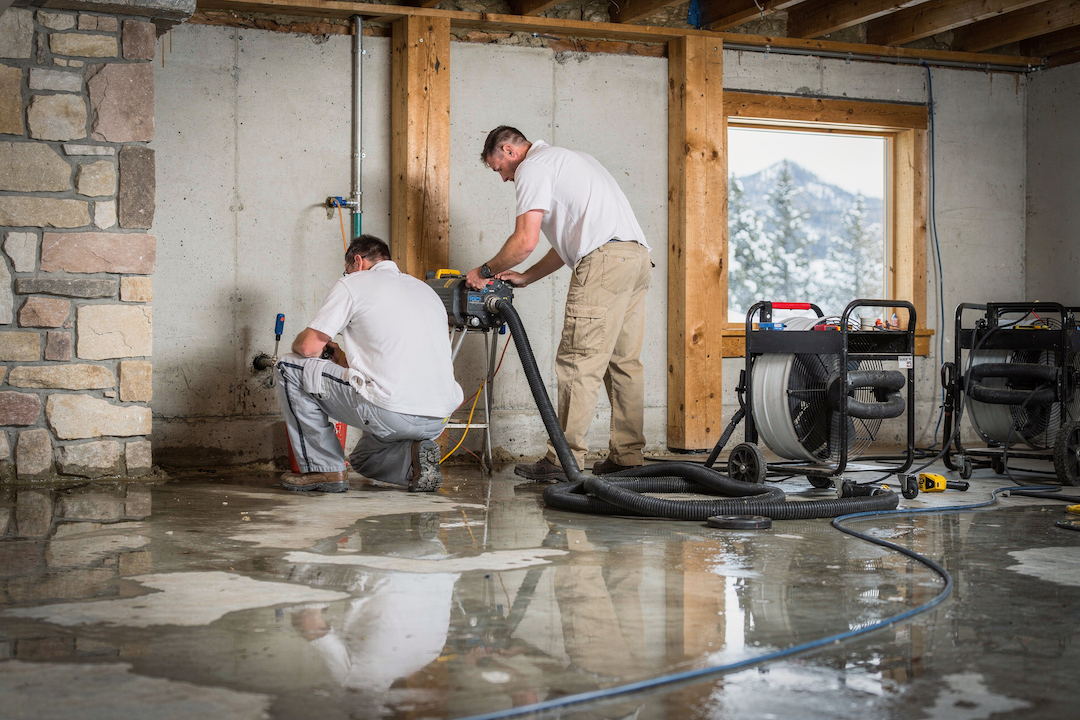
BoneDry Services is Colorado’s largest family owned restoration company, trusted for winter storm and water damage emergencies from Denver to remote mountain homes.
We provide:
- 24/7 emergency water damage restoration
- 90-minute arrival guarantee anywhere in Colorado
- Advanced moisture mapping & thermal imaging to locate hidden leaks
- Water extraction, structural drying & dehumidification
- Complete reconstruction and repairs
Call BoneDry Services for Emergency Leak Detection & Water Damage Repair
Hidden leaks can silently destroy your home — but early action prevents thousands of dollars in damage.
BoneDry Services offers:
- 24/7 rapid response
- Free inspections and leak detection
- Certified restoration & reconstruction teams
- Trusted service across all Colorado mountain communities
📞 Call now: (303) 276-4163
FAQ Section
1: How do snowstorms cause hidden roof leaks?
Ice dams and melting snow allow water to seep under shingles and into attic spaces, often without visible signs.
2: Why are Colorado mountain homes more vulnerable to hidden leaks?
Higher snowfall levels, colder temperatures, and frequent freeze–thaw cycles increase roof and attic stress.
3: Can hidden leaks lead to mold growth?
Yes. Moisture trapped in attics or wall cavities can lead to mold within 24–48 hours.
4: How often should I inspect my roof during winter?
After every significant storm, especially if you live above 7,000 ft elevation.
5: Does insurance cover leak-related water damage?
Most policies do, especially when caused by storms or ice dams. BoneDry helps document claims.
6: Can I detect hidden leaks without opening the walls?
Professional moisture mapping and thermal imaging can locate leaks without demolition.
7: Should vacation home owners take extra precautions?
Absolutely — unoccupied homes face higher risk and slower detection of water intrusion.
How quickly can BoneDry respond to emergencies?


We offer 24/7 emergency response and can arrive at your property within 90 mins to assess damage and start restoration. Time is crucial, and our team is always ready to act fast.
Does BoneDry handle insurance claims?


Yes! We work directly with your insurance company, providing detailed documentation of damages and restoration efforts to help make the claims process as smooth and efficient as possible.
What types of restoration services do you offer?


We specialize in water, fire, mold, sewage, storm damage, biohazard cleanup, and more. Whether you're facing flooding, fire damage, or hazardous contamination, we have you covered.
Is BoneDry certified to handle hazardous materials?


Yes, all of our technicians are certified and trained to handle hazardous materials, including mold, sewage, and biohazards. We follow strict safety protocols to ensure your property is safe.
How do I get a free inspection?


Simply contact us via phone or our online form. We’ll schedule a free inspection at your convenience to assess the damage and provide a detailed restoration plan.
Contact Us
Get in Touch with Us
24/7 Water Damage Restoration
Mold Removal & Remediation
Fire Damage Restoration
Biohazard Cleanup
Storm Damage Restoration
Sewage Cleanup
Emergency Board-Up
Structural Drying & Dehumidification
Contents Restoration
Odor Removal
Locations
Service Areas





























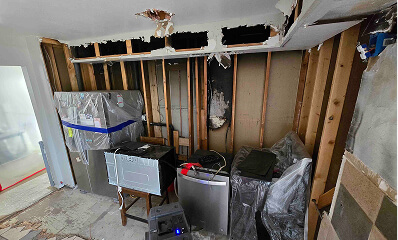

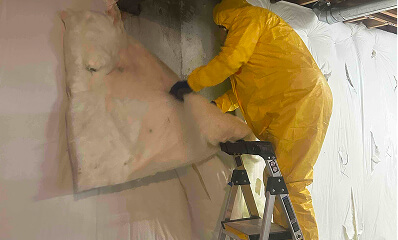

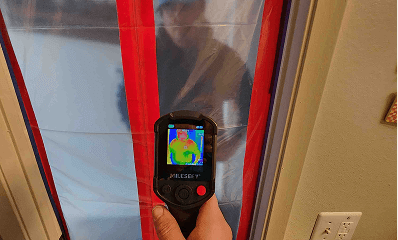
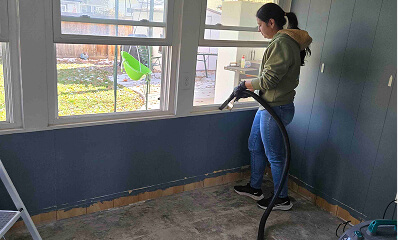



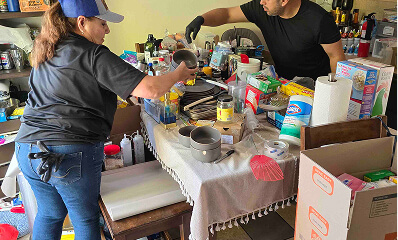
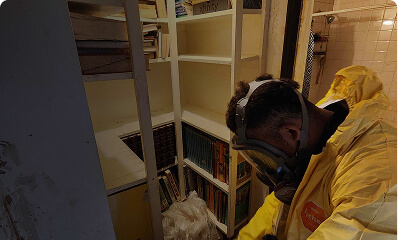


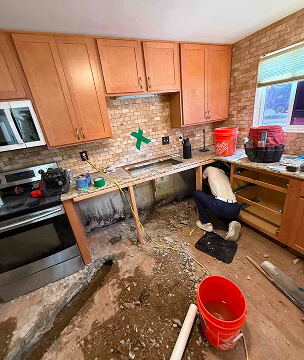
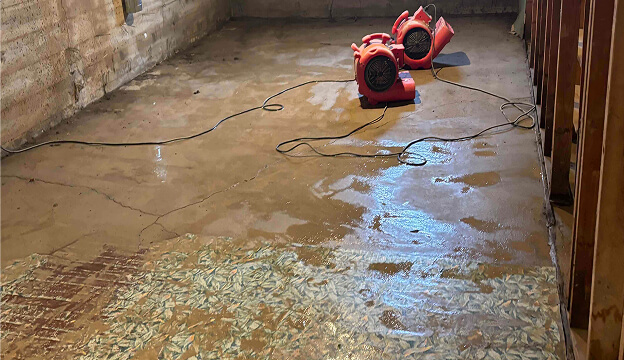
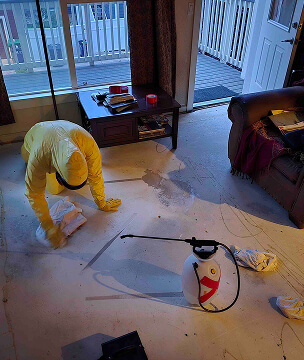
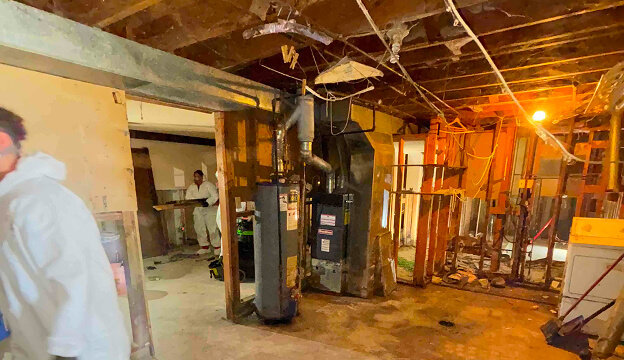


.svg)

.svg)
.svg)
.svg)



.svg)
.svg)
.svg)
.svg)
.svg)





